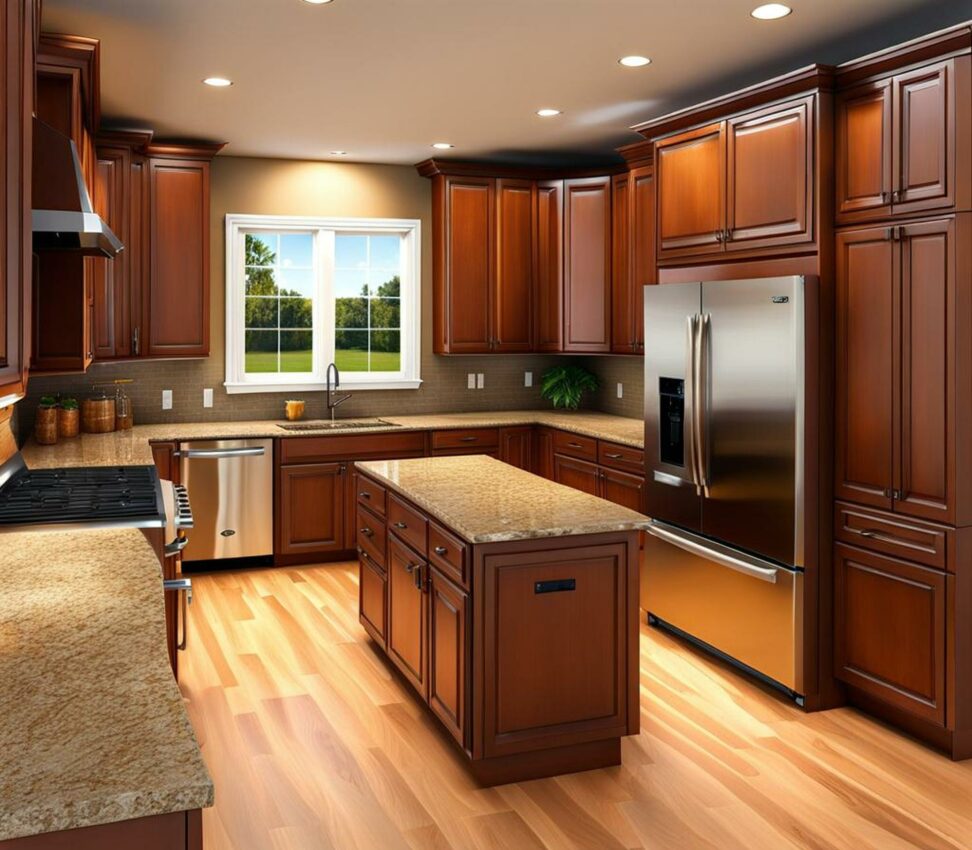Remodeling on a Budget? Optimize Your Kitchen Scope of Work
Taking on a kitchen remodel can be an exciting yet daunting task, especially when trying to stay within a tight budget. With some careful planning and strategic decision making during the design process, you can maximize your return on investment and avoid blowing your budget on non-essential finishes and features.
The key is optimizing your kitchen scope of work - the detailed outline of all required tasks, materials, and steps for the remodel. By scrutinizing this document line-by-line and reducing unnecessary costs wherever possible, you can stretch your budget further.

Determine Your Must-Have Elements
Before requesting contractor bids, decide which elements of your kitchen remodel are absolute must-haves versus nice-to-haves. Make a wish list of all desired updates, then prioritize changes that are functional or structural in nature - like altering the layout, replacing old plumbing and electrical, and installing new cabinetry.
While updated countertops and appliances are important, you have more flexibility when choosing finishes that suit your budget. Focus first on essential structural and systems elements before selecting finishes and décor.
Kitchen Layout
Changing your kitchen layout is a major undertaking, but provides one of the biggest functional improvements. Opening up walls, relocating plumbing fixtures, and creating an efficient work triangle between sink, stove, and refrigerator can completely transform how your kitchen functions.
Plumbing and Electrical
While not exciting finishes, plumbing and electrical updates are at the heart of a kitchen remodel. Replacing outdated pipes, improving water pressure, adding circuits and outlets, and increasing lighting make the kitchen fully functional and meet safety codes.
Cabinetry
Investing in new cabinetry makes a huge visual impact, while also adding storage and organization. Focus first on maximizing cabinet functionality and storage solutions, rather than ornate decorative elements.
Get Accurate Cost Estimates
Once you've set priorities, the next step is getting accurate estimates you can actually use to set a realistic budget. Interview several contractors and request detailed scopes of work for your project. Compare the specifics - not just the bottom line cost.
Ask questions about alternative materials and budget-friendly options. For example, ready-to-assemble cabinets cost less than custom, laminate counters instead of granite, standard appliances rather than luxury brands. Get quotes on different scenarios to determine where to splurge and where to save.
Schedule Appropriately
How the project is scheduled can also impact the budget. Drawn out timelines with gaps between steps leads to higher costs. Aim for each stage to flow continuously into the next, avoiding downtime where workers must demobilize then return multiple times.
Rush fees are common on fast-tracked remodels. Allow a reasonable timeline for proper demo, installation, inspections and finishing. Build contingencies into the schedule for potential delays like shipping or permit issues.
Review Scope Line-By-Line
Once you have detailed scopes of work from contractors, do a line-by-line review to identify any unnecessary tasks or materials. Question whether certain steps or products specified are absolutely essential, or if lower-cost substitutions could suffice.
Look for opportunities to use alternate suppliers for appliances, lighting and finishes to negotiate better deals. See if certain installation tasks - like basic electrical and plumbing work - can be safely DIYed rather than hiring a subcontractor.
Demo
Some selective demo like cabinetry removal or drywall demolition can potentially be taken on as sweat equity to avoid labor fees. Discuss with contractors where DIY demolition is an option.
Finishes
Carefully weigh the finishes specified in your scope of work - from counters to flooring to light fixtures. Simpler styles and less premium materials can reduce costs substantially without sacrificing too much aesthetically.
Consider Sweat Equity
Speaking of sweat equity, consider where you can take on certain installation tasks yourself to save on labor. Things like painting walls, assembling ready-to-install cabinetry, or even tile backsplash could potentially be DIYed.
Discuss with the contractor what self-performed work makes sense for your skill level and how to ensure changes don’t require revisions to any secured permits.
Inspect Before Each Stage
Stay actively involved throughout the remodel to ensure the scope of work is followed accurately. At the completion of each stage - framing, plumbing, etc - inspect the work thoroughly before signing off and approving subsequent steps.
Address any issues immediately to prevent complications down the line that could require change orders. Careful oversight keeps costs contained and avoids inflating your budget.
By prioritizing must-haves over nice-to-haves, scrutinizing the scope of work, scheduling efficiently, and utilizing sweat equity opportunities, you can successfully update your kitchen while sticking to your budget. Just remember that proper planning and diligent oversight are key when costs are a top concern.